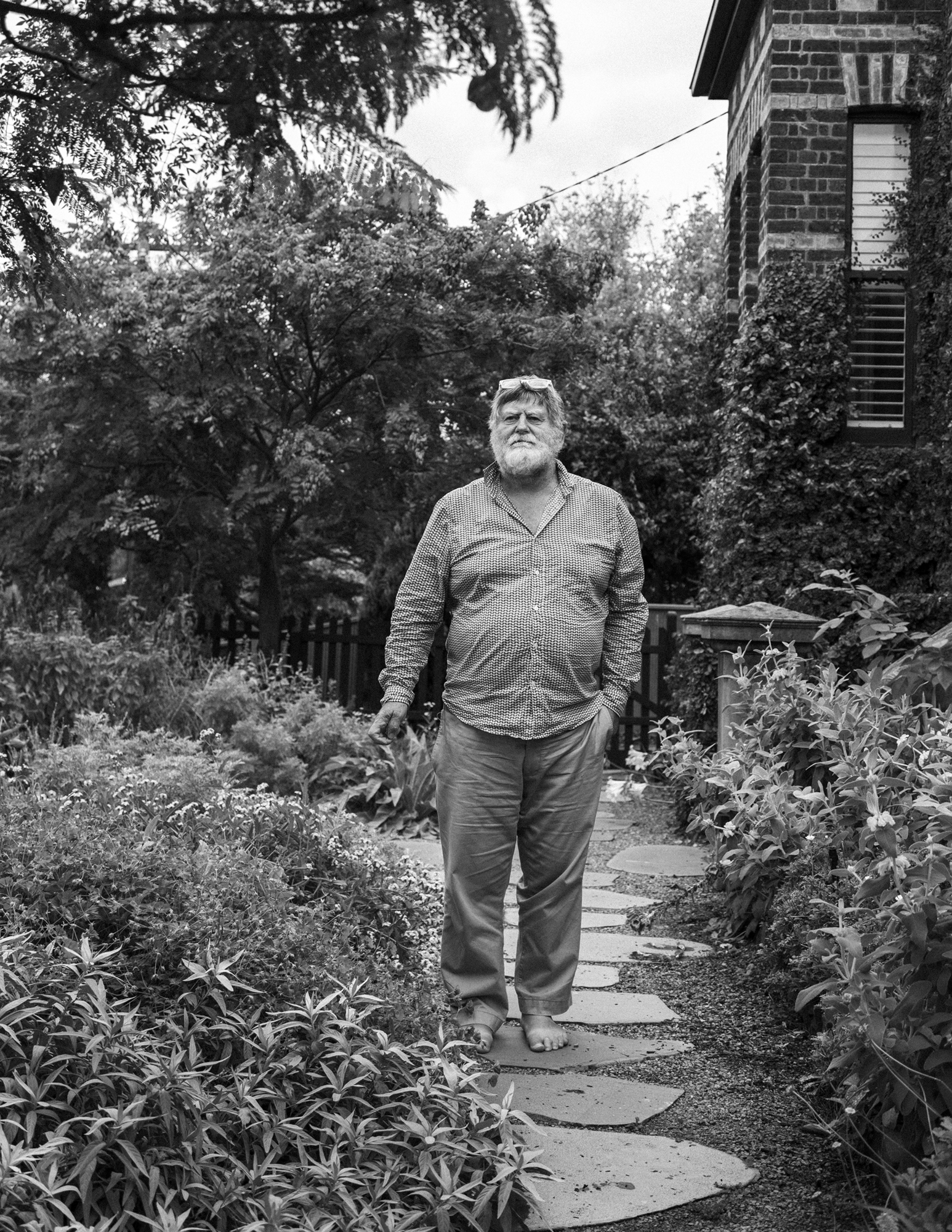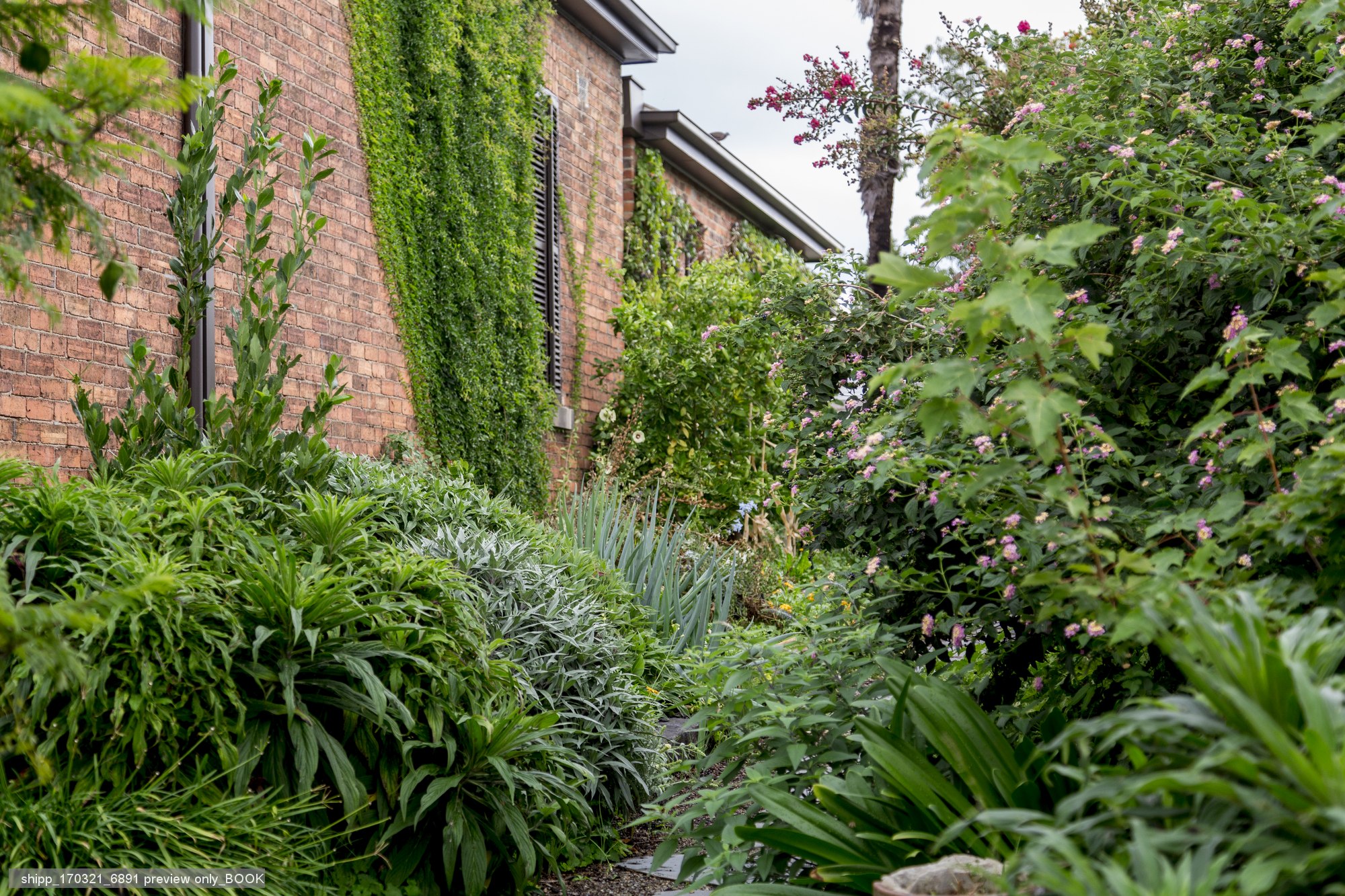Clive and Penny Blazey are Melbourne’s heirloom seed heroes
Clive Blazey and his wife Penny were early leaders in protecting heirloom seed varieties from extinction. His story features in The Planthunter: Truth, Beauty, Chaos and Plants by Georgina Reid with photography by Daniel Shipp, published by Thames & Hudson.
Clive Blazey is one of the great visionaries of Australian gardening. He and his wife, Penny, founded the Diggers Club in 1978 to rescue and reintroduce heirloom seed varieties, leading the charge against genetically modified and hybridised food plants. Forty years later, Clive’s determination hasn’t wavered. He is still fighting the good fight for diversity, climatic suitability, productivity and beauty in gardens.
Clive Blazey has a reputation. Not only is he an heirloom seed hero and a passionate plantsman with a deep appreciation for beauty, he is a man with strong opinions. He writes books with titles like There is No Excuse for Ugliness, says things like, ‘I think suburban gardens are almost universally horrible’, and irritates people with his stance on eucalyptus trees. ‘They’re really lousy shade trees.’
When I arrive at his home late one afternoon, the door is wide open and the front yard is an abundant tangle of early-autumn beauty. Low perennial plants like wormwood (Artemisia ludoviciana ‘Valerie Finnis’) and cranesbill (Geranium x himalayense ‘Rozanne’) spill out onto a gravel and bluestone pathway and echinacea flowers lean towards the end of their lives amid a jungle of wild foliage. ‘I’m not a tidy gardener,’ Clive says as he ambles up, barefoot, and offers us a drink. We sit on the front verandah of the home he shares with Penny, his wife, and meander verbally around his garden.
Clive has been gardening ideas and plants for most of his life. He and Penny founded mail order seed business The Diggers Club while he was studying business at university. ‘I went into Melbourne’s Royal Botanic Gardens when I was twenty-two and thought, “That’s where I want to live. In a little cottage surrounded by beautiful plants.” I suppose everyone has this vision of creating their own little piece of paradise.’

Clive’s idea of paradise was plant-based, but it soon became political. The Diggers Club was originally set up to rescue old and interesting varieties of vegetables, but a trip to Iowa in 1991 to visit Kent and Diane Whealy at the Seed Savers Exchange opened Clive’s eyes to the importance of preserving heirloom seeds. ‘After realising that around ninety-seven per cent of the vegetables grown in the USA in 1900 had been lost, Kent and Diane set about collecting and preserving their seed inheritance. Today, they have saved 20,000 different vegetable varieties and their exchange network keeps these varieties alive.’
Gardening connects you to biology, archaeology and the environment –it offers a fascinating perspective. With gardening, you never get to the stage of being confident you know enough.
In line with his focus on preserving diversity, Clive is a strong opponent of the genetic modification and corporatisation of seeds. ‘The greatest threat to plant diversity is the granting of seed patents to multinational chemical and seed companies. Before genetically modified (GM) crops were introduced and patented, around sixty per cent of seeds were publicly owned. Now the ownership of about seventy per cent of the world’s seeds is held by just six companies. Gene splicing under a microscope to manipulate ownership and control of seeds for profit is a symptom of how arrogant and separated we have become from nature. No species that loses control of its food supply has ever survived.’

Seed saving is a practice that gardeners and farmers have undertaken for aeons. Saving seeds from one season’s crop and replanting them the following year encourages genetic diversity and results in food crops that are best suited to local conditions. A handful of heirloom vegetable seeds weaves a story of people and place over hundreds, even thousands, of years. Seeds mean sustenance, story, shelter. Seed corporatisation undermines this ancient practice and transforms a birthright, story and legacy into private property.
If botanical diversity is the one arm of The Diggers Club, beauty is another. Clive is passionate about the creation of beauty through gardening. His love affair began, of course, with seeds. ‘It was from my passion for seeds that my love of creating beauty in the garden began to germinate. Gardening connects you to biology, archaeology and the environment –it offers a fascinating perspective. With gardening, you never get to the stage of being confident you know enough.’

The gardens owned by The Diggers Club – Heronswood and St Erth – are where Clive’s focus on seeds, biodiversity, organic gardening principles and beauty combine. The gardens at both properties are incredible – big, rambling, romantic spaces, full of weird and wonderful edible and ornamental plants. Both gardens are a labour of love for Clive, but he no longer works in them. ‘When Diggers was a straggling little operation, I’d work all weekend in the garden because we couldn’t afford enough gardeners.’ As the business expanded they began hiring professionals. A few years ago, Clive was kicked out of the gardening team. ‘My staff told me to get out of the garden because I’m not tidy enough for them!’
Clive and Penny recently moved back to the inner city. One of the reasons was that Clive ‘wanted to get back into gardening’. Their new home is a generous old beauty built in the 1880s and Clive is in the process of engulfing it in plants. There’s an informal perennial garden out the front, a mixture of edible and ornamental plants lining the wide pathway up the side, and a testing ground out the back where he is currently experimenting with different varieties of ferns and bamboo for possible inclusion in The Diggers Club’s plant catalogue.
‘I’m really fascinated by plants and I’m optimistic enough to think that I can get it right, eventually.’
He’s clearly relishing the opportunity to have his hands in the dirt again, making as much mess as he wants. ‘I’ll cut it back in May, do some more weeding, mulch it and that’s about it. Apart from fixing the mistakes I’ve made. I’ll have to correct a few of those.’ He’s done a great job. The garden is only a year old but it already feels settled and full. He credits the vigorous growth to a truckload of ‘zoo poo’ fertiliser added to the soil prior to planting. Clive’s kids, however, are tougher on him. ‘My kids are appalled at my sense of colour. To them it’s boring and old-fashioned. They’re into pinks and oranges together and stuff like that. I can’t see that in a pleasing way at all. This is all a bit hohum for them, I think.’ The colour palette is a mix of grey, blue and mauve tones – not avant-garde enough for his children, perhaps, but cohesive and beautiful nonetheless.

His children may not approve of Clive’s use of colour in the garden but they certainly appreciate the food he produces. His children and grandchildren regularly eat tomatoes, silverbeet and self-sown potatoes from his backyard. Just don’t ask him to cook. Given his thirty-year association with edible plants, organic gardening and heritage seeds, you might assume that Clive is a foodie. He’s not. Absolutely not. ‘If I ever offer to cook for my kids, they say, “Don’t, Dad”. I’m a so-called food legend because of the work we did with growing heritage plants, not because I know how to cook them.’
Clive Blazey is a surprising character. He’s a big personality, a passionate gardener, and a visionary whose actions have changed the course of gardening like few others. While his ideas can be divisive, they come from a place of truth. His desire for change, his concern for the environment and his love of beauty and cohesion underpin his actions. In this sense, Clive is an artist and plants are his medium. ‘I’m really fascinated by plants and I’m optimistic enough to think that I can get it right, eventually.’
A heartfelt thanks to Georgina and David for their words and photography. Clive’s is just one of many stories appearing in Georgina’s new book The Planthunter: Truth, Beauty, Chaos and Plants, with photographs by Daniel Shipp and published by Thames & Hudson. Photos by Daniel Shipp.
